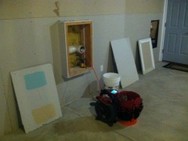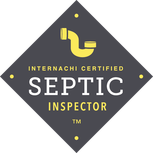The French are considered the first to use an underground septic tank system in the 1860s. By 1880, two-chamber septic systems were being used in the United States. Today, nearly one in four households in the United States depends on an individual septic (onsite) wastewater treatment system or small community cluster system to treat wastewater.
In 2007, 20 percent (26.1 million) of total U.S. housing units were served by septic systems. This is an increase of 1.54 million septic systems since 1985. In 2007, 22 percent (1.6 million) of all housing units less than 4 years old used septic systems. In 2007, 46 percent (10.1 million) of occupied housing units with septic systems were located in the southern region of the United States.
In far too many cases, the septic systems in the U.S. are installed and largely forgotten — until problems arise. EPA concluded in its 1997 Report to Congress that "adequately managed decentralized wastewater systems are a cost-effective and long-term option for meeting public health and water quality goals, particularly in less densely populated areas."
The difference between a failed system and a functional system is the implementation of an effective wastewater maintenance and inspection program. Such a program, if properly executed, can protect public health, preserve valuable water resources, and maintain economic vitality in a community.
When used properly, an onsite system can function very well for many years. If used improperly, the system will fail and cause conditions that threat human health and the environment. Inspection and maintenance is key to ensuring that septic systems function properly.
Onsite wastewater treatment and disposal systems are inspected routinely across the United States during a real estate transaction. There are several national associations that have developed standards for the inspection and maintenance of septic systems. Every state regulates the installation of septic systems and most require strict certification and training of installers and inspectors.
A septic inspection leads to an inspection report that provides the client with information about the type and condition of the onsite wastewater treatment system as observed at the time of the inspection. Recommendations for further evaluation or corrective actions regarding the systems and components might be included in the report.
It should be the intention of the inspector to provide as much accurate, unbiased information about the septic system’s condition so that the client can make smart, informed decisions. In your particular state or county, the septic inspector might not be required to declare a system to be malfunctioning, failed or non-compliant. This will likely be the responsibility of the local administrative authority such as the local or state health department. The inspector simply reports any observed condition that may represent an indication of a malfunctioning system to their client and the local health department soon after (typically within 24 hours) the septic inspection.
A typical septic inspection is:
In 2007, 20 percent (26.1 million) of total U.S. housing units were served by septic systems. This is an increase of 1.54 million septic systems since 1985. In 2007, 22 percent (1.6 million) of all housing units less than 4 years old used septic systems. In 2007, 46 percent (10.1 million) of occupied housing units with septic systems were located in the southern region of the United States.
In far too many cases, the septic systems in the U.S. are installed and largely forgotten — until problems arise. EPA concluded in its 1997 Report to Congress that "adequately managed decentralized wastewater systems are a cost-effective and long-term option for meeting public health and water quality goals, particularly in less densely populated areas."
The difference between a failed system and a functional system is the implementation of an effective wastewater maintenance and inspection program. Such a program, if properly executed, can protect public health, preserve valuable water resources, and maintain economic vitality in a community.
When used properly, an onsite system can function very well for many years. If used improperly, the system will fail and cause conditions that threat human health and the environment. Inspection and maintenance is key to ensuring that septic systems function properly.
Onsite wastewater treatment and disposal systems are inspected routinely across the United States during a real estate transaction. There are several national associations that have developed standards for the inspection and maintenance of septic systems. Every state regulates the installation of septic systems and most require strict certification and training of installers and inspectors.
A septic inspection leads to an inspection report that provides the client with information about the type and condition of the onsite wastewater treatment system as observed at the time of the inspection. Recommendations for further evaluation or corrective actions regarding the systems and components might be included in the report.
It should be the intention of the inspector to provide as much accurate, unbiased information about the septic system’s condition so that the client can make smart, informed decisions. In your particular state or county, the septic inspector might not be required to declare a system to be malfunctioning, failed or non-compliant. This will likely be the responsibility of the local administrative authority such as the local or state health department. The inspector simply reports any observed condition that may represent an indication of a malfunctioning system to their client and the local health department soon after (typically within 24 hours) the septic inspection.
A typical septic inspection is:
- An objective evaluation of the onsite wastewater treatment system based upon the inspector’s experience and knowledge;
- An evaluation of each inspected component of the system; and
- A conclusion about the system’s condition.
- A warranty or guarantee that the system will properly function for any period of time in the future; and
- A certification of the system’s installation or performance.


 RSS Feed
RSS Feed